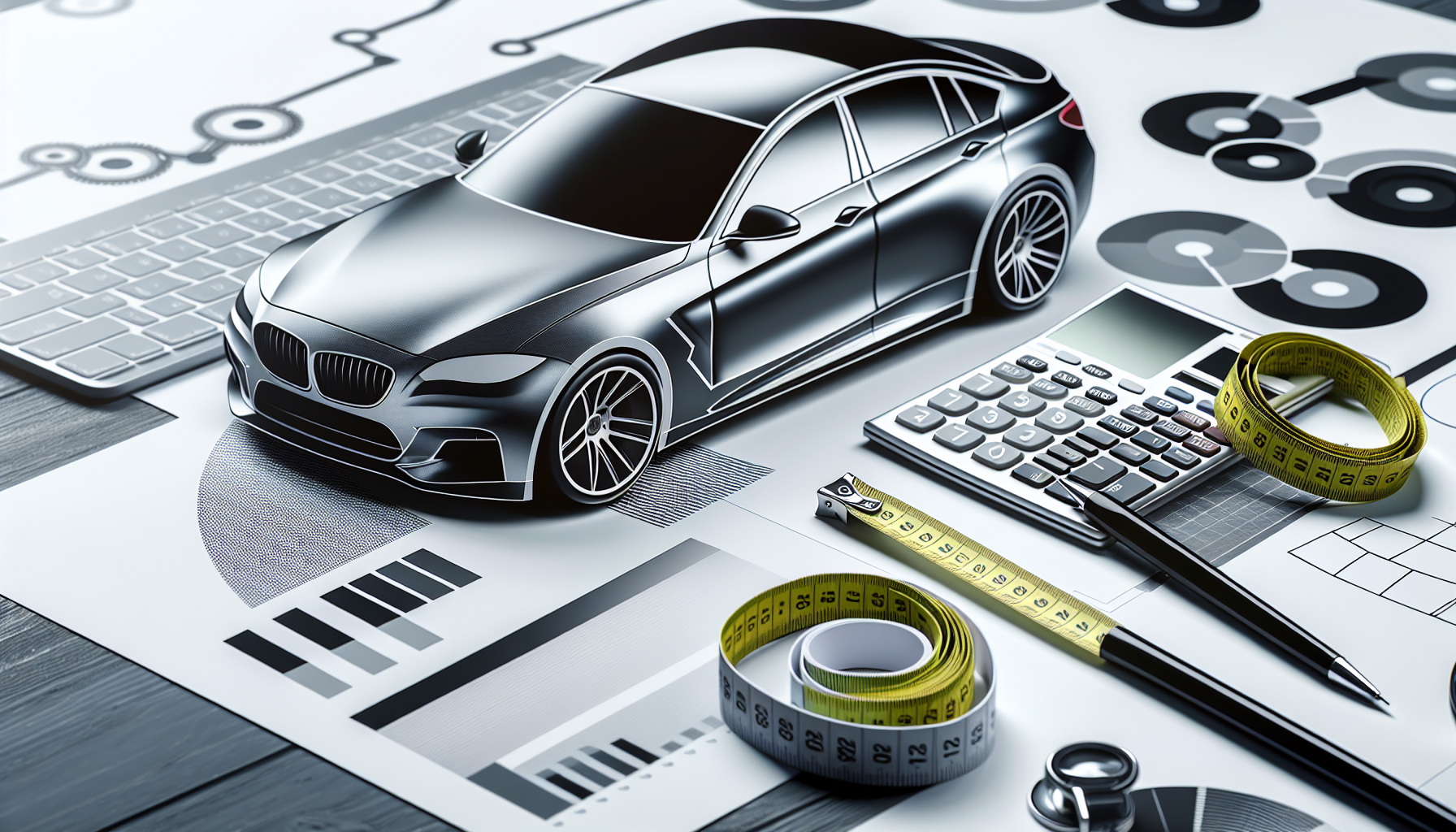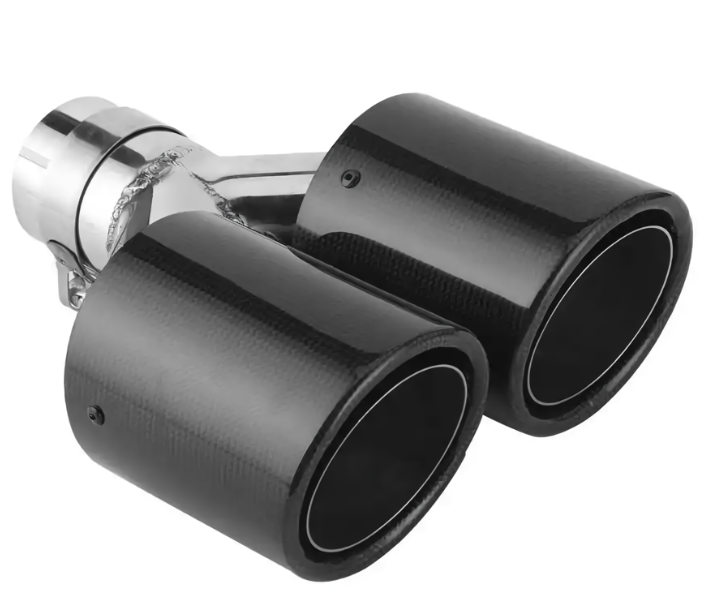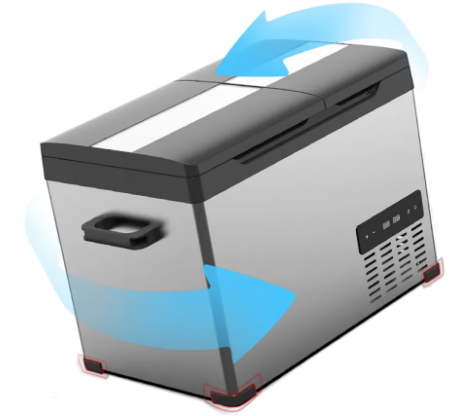Unlock the Secret to a Flawless Car Vinyl Wrap Installation

Transforming your car with a vinyl wrap can be a thrilling experience, but it all starts with a precise calculation. A well-measured wrap is not only essential for a professional finish but also ensures a seamless installation process. In this comprehensive guide, we will walk you through the step-by-step process of calculating the perfect car vinyl wrap, avoiding common mistakes, and revealing expert tips and tricks for a successful installation. Whether you’re a DIY enthusiast or a professional installer, this article will equip you with the knowledge and confidence to achieve a stunning car vinyl wrap.
Measuring your car accurately is crucial to avoid costly mistakes and ensure a perfect fit. With the right tools and techniques, you can achieve a showroom-quality finish that will turn heads on the road. Our guide will cover everything from measuring the length and width to calculating the exact amount of wrap needed, considering factors such as wrap thickness and material. We’ll also delve into the importance of pre-installation preparation and working with a professional installer.
By the end of this article, you’ll be well-equipped to calculate the perfect car vinyl wrap with ease and confidence. So, let’s get started on this journey to a stunning car makeover!
1. Why Measuring Your Car Matters
Measuring your car is a crucial step in the vinyl wrap process that’s often overlooked, but it’s the key to a flawless installation. Accurate measurements ensure a perfect fit, which is essential for a professional finish. A well-measured wrap not only looks stunning but also saves you time and money in the long run. With precise measurements, you can avoid costly reprints, reduce waste, and ensure a smooth installation process.
Inaccurate measurements, on the other hand, can lead to a range of issues, from wrinkles and bubbles to a loose fit that peels off easily. A poorly measured wrap can also compromise the overall appearance of your car, making it look amateurish and unappealing. By taking the time to measure your car accurately, you can avoid these common mistakes and achieve a showroom-quality finish that will turn heads on the road.
By investing in accurate measurements, you’re investing in the overall success of your car vinyl wrap project. With the right measurements, you can choose the perfect design, select the right materials, and ensure a seamless installation process. In the next section, we’ll explore the common mistakes to avoid when measuring your car, so you can get it right the first time.
Common Mistakes to Avoid
When it comes to measuring your car for a vinyl wrap, it’s easy to fall into common traps that can cost you time and money. One of the most common mistakes is failing to account for curves and contours. Many car owners and installers mistakenly assume that a flat measurement will suffice, but this can lead to a poor fit and a less-than-professional finish. By neglecting to measure the curves and contours of your car, you may end up with a wrap that’s too small or too large, resulting in a costly reprint or reinstallation.
Another mistake to avoid is using the wrong measurement tools. A flimsy tape measure or an inaccurate calculator can lead to mistakes that can be disastrous for your vinyl wrap project. It’s essential to invest in high-quality tools and to double-check your measurements to ensure accuracy. Additionally, failing to consider obstructions such as emblems, trim, and moldings can lead to a poor fit and a less-than-desirable finish. By being aware of these common mistakes, you can take steps to avoid them and ensure a successful vinyl wrap project.
By taking the time to learn from these common mistakes, you can ensure a flawless installation that will make your car stand out on the road. In the next section, we’ll explore the essential tools and techniques you need to get accurate measurements, so you can get started on your vinyl wrap project with confidence.
Gather Your Measurement Tools
Before you start measuring your car for a vinyl wrap, it’s essential to gather the right tools for the job. A high-quality tape measure is a must-have, as it will provide you with accurate measurements. Look for a tape measure that’s sturdy, flexible, and has a clear reading display. A calculator is another crucial tool that will help you calculate the total square footage of your car’s surface area. Make sure to choose a calculator that’s easy to use and has a reliable memory function.
A template is also a valuable tool that will help you visualize the design and layout of your vinyl wrap. You can create a template using graph paper or a digital design software. This will give you a clear understanding of the wrap’s dimensions and how it will fit on your car. Additionally, consider investing in a measurement software or app that can help you calculate the measurements and generate a precise template.
With the right tools, you’ll be able to take accurate measurements and create a flawless vinyl wrap design. Remember to always double-check your measurements to ensure accuracy and avoid costly mistakes. By investing in the right tools, you’ll be able to achieve a professional finish that will make your car stand out on the road. In the next section, we’ll explore the step-by-step process of measuring your vehicle for a car vinyl wrap.
2. How to Measure Your Vehicle for a Car Vinyl Wrap

Measuring your vehicle for a car vinyl wrap may seem like a daunting task, but with our step-by-step guide, you’ll be able to get the perfect measurements for your car. The first step is to start with the length and width of your car. Begin by measuring the length of your car from the front bumper to the rear bumper, making sure to include any protrusions such as antennas or spoilers. Next, measure the width of your car from one side mirror to the other, taking note of any obstructions such as emblems or trim.
Once you have the length and width, you can move on to measuring the height of your car. Start at the center of the roof and measure down to the bottom of the door, taking note of any curves or contours. Don’t forget to measure the bumpers, mirrors, and spoiler, as these areas will require additional wrap material. It’s essential to take your time and be meticulous when measuring your car, as accurate measurements are crucial for a successful vinyl wrap installation.
By following our step-by-step guide, you’ll be able to get the perfect measurements for your car and ensure a flawless vinyl wrap installation. Remember to take photos and notes as you measure your car, as this will help you visualize the design and layout of your wrap. In the next section, we’ll explore how to calculate the amount of wrap material needed, so you can get the perfect fit for your car.
Measuring the Length and Width
When measuring the length and width of your car, it’s essential to be precise and accurate. Start by measuring the length of your car from the front bumper to the rear bumper, taking note of any protrusions such as antennas or spoilers. Make sure to measure along the centerline of the car, and don’t forget to include any additional features such as a roof rack or tow hitch. For a more accurate measurement, consider breaking down the length into smaller sections, such as the hood, roof, and trunk.
When measuring the width, start at the center of the car and measure out to the edge of the side mirror. Take note of any obstructions such as emblems, trim, or molding, as these will affect the fit of the vinyl wrap. Don’t forget to measure the width of the hood, roof, and trunk, as well as any additional features such as a sunroof or moonroof. By taking your time and being meticulous, you’ll be able to get an accurate measurement that will ensure a flawless vinyl wrap installation.
Remember to take photos and notes as you measure your car, as this will help you visualize the design and layout of your wrap. It’s also a good idea to measure your car multiple times to ensure accuracy and consistency. By following these steps, you’ll be able to get the perfect measurements for your car and achieve a stunning vinyl wrap finish. In the next section, we’ll explore how to measure the height and contours of your car.
Measuring the Height and Contours
Measuring the height and contours of your car is a crucial step in the vinyl wrap process. It’s essential to take into account the unique features of your car, such as the bumpers, mirrors, and spoiler, to ensure a seamless installation. Start by measuring the height of your car from the center of the roof to the bottom of the door, taking note of any curves or contours. Don’t forget to measure the height of the bumpers, mirrors, and spoiler, as these areas will require additional wrap material.
When measuring the contours of your car, pay attention to any areas that may be difficult to wrap, such as rounded edges or sharp corners. Take note of any obstructions such as trim, molding, or emblems, as these will affect the fit of the vinyl wrap. Consider using a flexible measuring tape or a template to help you capture the exact shape and size of these areas. By taking your time and being meticulous, you’ll be able to get an accurate measurement that will ensure a flawless vinyl wrap installation.
Remember to take photos and notes as you measure your car, as this will help you visualize the design and layout of your wrap. It’s also a good idea to measure your car multiple times to ensure accuracy and consistency. By following these steps, you’ll be able to get the perfect measurements for your car and achieve a stunning vinyl wrap finish. With accurate measurements, you’ll be able to create a design that perfectly fits your car’s unique shape and size.
3. Calculating the Amount of Car Vinyl Wrap Needed
Calculating the amount of car vinyl wrap needed can be a daunting task, but with our formula, you’ll be able to get an accurate estimate. The first step is to calculate the total square footage of your car’s surface area. To do this, multiply the length and width of your car to get the total square footage. Next, add 10-15% to the total square footage to account for any mistakes or errors. This will give you a buffer zone to ensure you have enough wrap material.
Now, let’s talk about the wrap calculation formula. The formula is: Total Square Footage x Wrap Thickness x Material Yield = Total Amount of Wrap Needed. The wrap thickness will depend on the type of material you’re using, and the material yield will vary depending on the manufacturer. Be sure to consult the manufacturer’s instructions for the specific material yield.
By using our formula, you’ll be able to calculate the exact amount of wrap needed for your vehicle. This will ensure you have enough material to complete the installation without running out, and you’ll avoid wasting money on excess material. Remember to always double-check your calculations to ensure accuracy. With the right amount of wrap material, you’ll be able to achieve a stunning vinyl wrap finish that will make your car stand out on the road.
The Wrap Calculation Formula
The wrap calculation formula is a simple and effective way to determine the amount of wrap needed for your vehicle. The formula is: Total Square Footage x Wrap Thickness x Material Yield = Total Amount of Wrap Needed. The total square footage is the total area of your car’s surface, including the hood, roof, trunk, and doors. The wrap thickness refers to the thickness of the vinyl material, which can vary depending on the type of wrap you’re using. The material yield is the amount of wrap that can be obtained from a single roll of material.
When using the wrap calculation formula, it’s essential to consider several factors that can affect the amount of wrap needed. For example, if you’re using a complex design or pattern, you may need to add more wrap to account for the extra material needed. Additionally, if you’re wrapping a car with a lot of curves or contours, you may need to add more wrap to ensure a smooth and seamless installation. By considering these factors, you can get an accurate estimate of the amount of wrap needed and avoid running out of material during the installation process.
By using the wrap calculation formula, you can ensure that you have enough wrap material to complete the installation and achieve a stunning vinyl wrap finish. Remember to always double-check your calculations and consider any additional factors that may affect the amount of wrap needed. With the right amount of wrap material, you’ll be able to achieve a professional-looking finish that will make your car stand out on the road.
Wrap Thickness and Material Considerations
When it comes to calculating the amount of wrap needed for your vehicle, wrap thickness and material considerations are crucial. The thickness of the wrap material can affect the amount of wrap needed, as thicker materials will require more wrap to cover the same surface area. Additionally, the type of material used can also impact the installation process. For example, cast vinyl materials are more conformable than calendared materials, making them easier to install on complex curves and contours.
The material used can also affect the durability and lifespan of the wrap. For example, high-performance cast vinyl materials can withstand harsh weather conditions and last for up to 5 years, while economy-grade materials may only last for 1-2 years. By considering the wrap thickness and material type, you can ensure that you have the right amount of wrap needed for your vehicle and that the installation will last for years to come.
By taking into account wrap thickness and material considerations, you can avoid common mistakes such as underestimating the amount of wrap needed or using the wrong material for the job. By choosing the right material and calculating the correct amount of wrap needed, you can ensure a smooth and successful installation process that will leave your car looking stunning and protected.
4. Tips and Tricks for a Successful Car Vinyl Wrap Installation
Installing a car vinyl wrap can be a complex process, but with the right tips and tricks, you can achieve a smooth and successful installation. One of the most important things to remember is to prepare your car’s surface properly. This includes cleaning the car thoroughly, removing any wax or oils, and repairing any scratches or imperfections. By doing so, you’ll ensure that the wrap adheres properly and lasts for a long time.
Another important tip is to use the right tools for the job. Invest in a high-quality squeegee, which will help you apply the wrap smoothly and evenly. You’ll also want to use a heat gun to apply heat to the wrap, allowing it to conform to the car’s curves and contours. Additionally, make sure to work in a clean and dry environment, as dust and moisture can affect the installation process.
By following these tips and tricks, you’ll be able to achieve a professional-looking finish that will make your car stand out on the road. Remember to take your time, work carefully, and don’t be afraid to ask for help if you need it. With the right skills and knowledge, you’ll be able to create a stunning car vinyl wrap that will last for years to come.
Pre-Installation Prep
Before installing a car vinyl wrap, it’s essential to prepare your car’s surface properly. This includes cleaning the car thoroughly to remove any dirt, dust, or debris that may interfere with the installation process. Use a mild soap and water to clean the car, and avoid using any harsh chemicals or abrasive materials that can damage the paint. Additionally, remove any wax or oils from the car’s surface, as these can prevent the wrap from adhering properly.
Removing wax and oils from the car’s surface is a critical step in the pre-installation process. You can use a wax remover or a specialized cleaning solution to remove any residue. Make sure to wipe down the car’s surface with a clean microfiber cloth to remove any remaining residue. By doing so, you’ll ensure that the wrap adheres properly and lasts for a long time.
By taking the time to prepare your car’s surface properly, you’ll be able to achieve a smooth and successful installation process. Remember to take your time, be patient, and don’t rush through the process. With a clean and prepared surface, you’ll be able to create a stunning car vinyl wrap that will make your car stand out on the road.
Working with a Professional Installer
Working with a professional installer can make all the difference in the success of your car vinyl wrap installation. A reputable installer will have the skills and experience to ensure a smooth and successful installation process. To find a professional installer, ask for referrals from friends or family members who have had a car wrap installed. You can also check online review sites such as Yelp or Google to find installers in your area. Make sure to research the installer’s reputation and check their portfolio before hiring them.
When working with a professional installer, you can expect a thorough and meticulous installation process. The installer will begin by preparing your car’s surface, cleaning and removing any wax or oils. They will then apply the wrap, using specialized tools and techniques to ensure a smooth and even application. The installer will also work with you to ensure that the wrap is installed to your exact specifications, including the design and layout.
By working with a professional installer, you can ensure that your car vinyl wrap is installed to the highest standards. A reputable installer will take the time to explain the installation process and answer any questions you may have. They will also provide you with a warranty or guarantee, giving you peace of mind and protection for your investment. With a professional installer, you can trust that your car will look amazing and that the wrap will last for a long time.
What is the most important thing to consider when measuring my car for a vinyl wrap?
The most important thing to consider when measuring your car for a vinyl wrap is to ensure accurate measurements. This includes taking into account the car’s curves and contours, as well as any obstructions such as emblems, trim, and moldings.
How do I know which type of vinyl wrap material to choose for my car?
The type of vinyl wrap material to choose for your car depends on the desired durability, finish, and budget. Cast vinyl materials are more conformable and durable, while calendared materials are more economical. High-performance cast vinyl materials are ideal for harsh weather conditions and long-term durability.
Can I install a car vinyl wrap myself, or do I need to hire a professional installer?
While it’s possible to install a car vinyl wrap yourself, it’s recommended to hire a professional installer for a smooth and successful installation. A professional installer will have the skills and experience to ensure a precise and efficient installation process.
How long does a car vinyl wrap typically last?
The lifespan of a car vinyl wrap depends on the quality of the material, the installation process, and the environmental conditions. On average, a car vinyl wrap can last for up to 5 years, with high-performance materials lasting up to 7 years or more.
Can I remove a car vinyl wrap if I no longer want it?
Yes, a car vinyl wrap can be removed, but it’s recommended to do so carefully to avoid damaging the car’s paint. A professional installer can assist with the removal process, or you can use a specialized removal solution and follow the manufacturer’s instructions.


